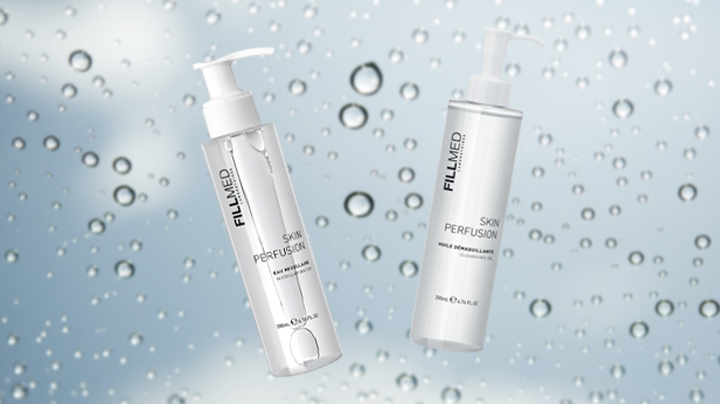The Lazy Girl’s Guide to Having a Skincare Routine
February 13, 2021

It’s 2021. Gone are the days of just using bath soap or laundry bars (remember that?!) on your face. Today, thanks to science, we’ve got a myriad of selections to choose from depending on our skin type, budget, and even skin problems. But if you’ve been curious about cleansing oil and micellar water, keep reading because we’ll pull back the curtain on these two types of skin cleansers—and which one is best for you.
According to beauty and lifestyle digital magazine Sunday Edit, there are two types of cleansers: oil-based and water-based.
Water-based cleansers, like foaming washes, exfoliating foams, hydrating creams, and micellar waters are meant to wash away water-soluble particles like dirt and pollution. Out of the examples mentioned, micellar water is the gentlest, which is perfect for sensitive skin. We all know water and oil don’t mix, so it might take a bit more elbow grease for water-based products to remove make-up from your face, which is usually oil-based.
Meanwhile, oil-based cleansers like cleansing balm, cleansing oil, and wipes use a type of oil to breakdown dirt and oil-based make-up to make it easier to wash off your face. According to Dr. Lily Talakoub, “Oil-based cleansers are also gentler on the skin [because] they leave the natural oil layer on top of the skin, so for sensitive and rosacea-prone skin, there is minimal irritation.” This type of cleanser works best on waterproof make-up. Oil-based products rarely create foams, so it might take a bit of getting used to at first, but trust the product that it’s doing its job of cleansing your face.
According to BEAUTYcrew, a beauty site by the experts from marie claire, InStyle, and Women’s Health, the main consideration for choosing the right cleanser is your skin type. In their interview with skin and nutrition expert Fiona Tuck, she says, “There is no right or wrong formula; it just really depends on your skin condition and how much additional oil your skin needs.”
So if you have oily skin, it’s best to have a cleanser with less oil, so go for micellar water or other water-based cleansers. “Applying oil-based product to an already oily complexion could result in congestion or breakouts — the skin simply does not need the extra oil. As a general guide, if you have oily skin, choose water-based products that do not leave an oily residue on the skin.” Water-based products are best for oily, acne-prone, and sensitive skin because it washes away excess oil and doesn’t add oiliness to your face.
We highly recommend Fillmed Skin Perfusion Micellar Water because it’s gentle on the skin but powerful against impurities, it has a cooling effect so it leaves your skin feeling hydrated and refreshed, and it’s also enriched with Niacinamide, a powerful soothing agent.
However, if you have dry skin, it means you can benefit from oil-based cleansers, which help replenish the natural oils on your face. “If skin is really dry, you need to replace the lost skin lipids with an oil-based product to help repair the integrity of the skin; the drier the skin, the richer the product you should use,” Ms. Tuck suggests. She suggests oil-based cleansers with “nourishing ingredients, such as vitamin E, vitamin A, retinol, avocado, jojoba, rosehip and essential fatty acids.”
Belo experts vouch for Fillmed Skin Perfusion Cleansing Oil because it’s a gentle make-up remover that deeply cleans the skin while restoring its natural oils. It contains an oil complex, which protects the skin’s barrier and leaves a soft-to-touch protective coating to keep your skin supple and well-hydrated.
The Sunday Edit also mentioned clay cleansers is an ideal middle ground “if you are wary of putting oil onto your skin but do not want to risk water-based cleansers being too harsh.” It’s made with mineral-rich clays, which draws dirt and bacteria from your skin, it leaves your face feeling squeaky clean when washed off. It’s great for deep cleansing and there are various types to suit your skin type, just make sure to check the label.
Skin experts around the world have been gushing about the wonders of double cleansing. According to Elle, double cleansing “involves using a cleansing oil, balm or micellar water to break down make-up, SPF and sebum on the surface of your skin first, then following it with a deeper water-based cleanse.” It uses both cleansers together to get the best of both worlds.
It’s pretty easy to do, but dermatologists remind us of two important things about double cleansing:
(1) Take your time when cleansing because it usually takes three to four wipe-arounds to get rid of all the make-up and they suggest taking at least two minutes of washing your face to make sure you get the full effects of your water-based cleanser and its active ingredients, and
(2) Only use lukewarm water to rinse off the cleansers, because if the water is too hot, you might end up irritating your skin. In one of the episodes of The Beauty Authority, Dr. Vicki Belo also talked about the importance of using water that’s not too hot when washing your face or taking a shower.
If you want to find more expert-recommended products for better skin, visit the Belo Shop.
Related Stories
February 5, 2021
Most Popular
Belo Beautiful Stories: Coach Hazel Benipayo and the Rhinoplasty Glow-Up That Changed Her Life